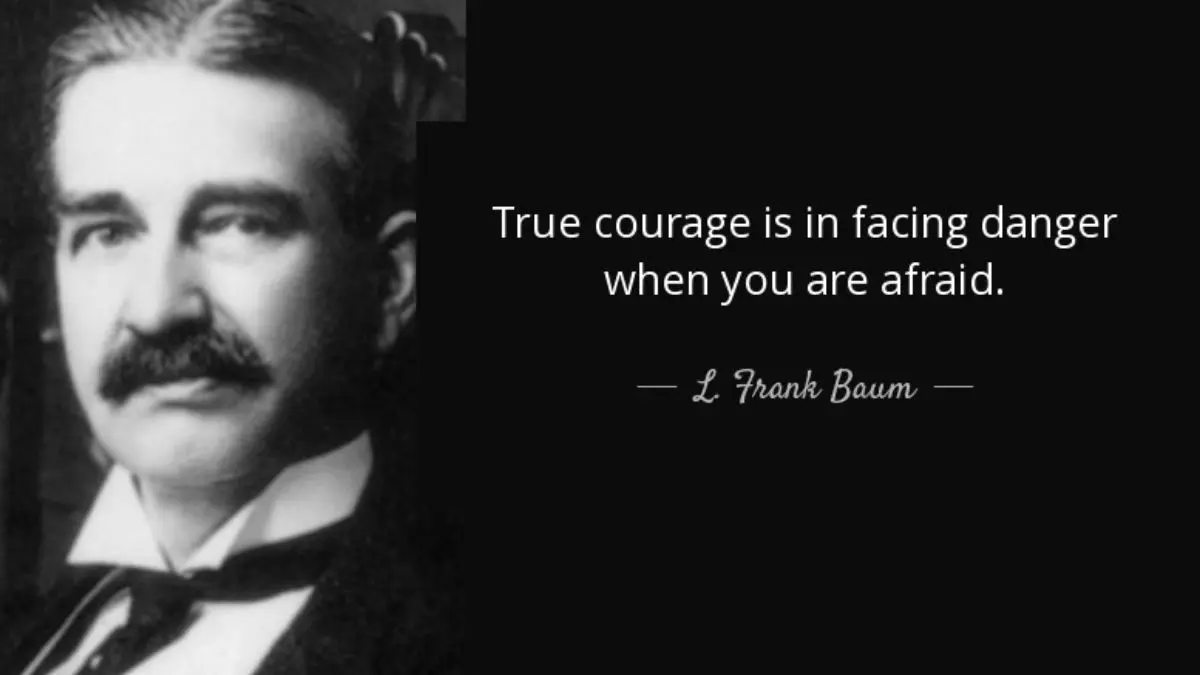Courage is a virtue often celebrated in tales of heroism and adventure, but the essence of true courage is more profound than mere bravado. The quote, “The true courage is in facing danger when you are afraid,” encapsulates a deeper understanding of what it means to be brave. It highlights that courage is not the absence of fear, but the ability to act despite it. This perspective offers a powerful insight into the human experience and the nature of bravery.
Unpacking the Meaning
At its core, this quote suggests that real courage emerges in the presence of fear. If an individual is not afraid, their actions, no matter how daring, do not truly embody courage. It is the presence of fear, and the decision to move forward regardless, that defines genuine bravery. This concept can be applied to various aspects of life, from personal challenges to larger societal issues.
Fear is a natural response to danger or uncertainty. It is an emotional signal that we are stepping out of our comfort zones or facing potential harm. However, fear also has the potential to paralyze us, preventing us from taking necessary actions. Courage, therefore, is the quality that enables us to overcome this paralysis, to acknowledge our fear, and still choose to act.
Examples of True Courage
- Personal Struggles: Consider the example of someone battling a severe illness. The fear of pain, uncertainty, and possible death is overwhelming. Yet, those who face their treatment head-on, who continue to hope and fight, exemplify true courage. They are not without fear; rather, they are acutely aware of it and choose to confront it daily.
- Historical Heroes: Think about historical figures like Martin Luther King Jr. He was undoubtedly aware of the dangers he faced in fighting for civil rights, including threats to his life. Despite his fear, he continued to lead marches, deliver speeches, and advocate for justice. His courage lay not in a lack of fear, but in his determination to act in spite of it.
- Everyday Acts of Bravery: Everyday examples of true courage can be found in the actions of ordinary people. A firefighter rushing into a burning building, a bystander stepping in to stop a crime, or a student standing up to a bully all face fear and danger. Their actions, driven by the desire to help others or stand up for what is right, demonstrate the essence of true courage.

Hidden Meaning and Broader Implications
The hidden meaning behind this quote extends beyond individual acts of bravery. It speaks to the resilience of the human spirit and our capacity to overcome adversity. By recognizing that fear is an integral part of courage, we can better appreciate the strength required to confront life’s challenges.
This understanding can also inspire us to be more compassionate toward ourselves and others. Acknowledging our fears does not make us weak; it humanizes us. It allows us to connect with others who are also struggling and to support one another in facing our fears.
In professional settings, this concept can encourage innovation and risk-taking. Leaders who acknowledge their fears but proceed with their vision inspire their teams to do the same. It fosters an environment where growth and progress are valued over the comfort of the status quo.
Conclusion
“The true courage is in facing danger when you are afraid” is a powerful reminder of what it means to be truly brave. It is not about being fearless, but about recognizing our fears and choosing to act in spite of them. Whether in personal battles, historical movements, or everyday situations, true courage is defined by our ability to confront fear head-on.
Also Read: Find your own way, you don’t have to follow the crowd. There’s only one you in this great big world.




